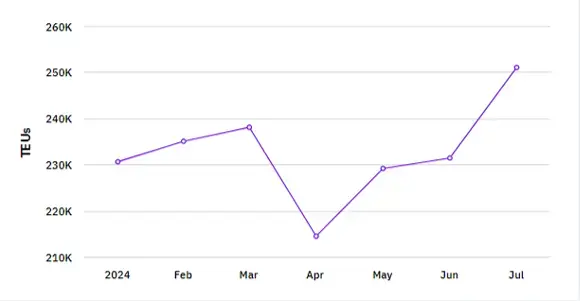Webinars & Videos
Watch videos featuring supply chain experts
In recent updates from A.P. Møller-Maersk, the company has made significant adjustments to its 2024 financial guidance due to strong market demand and disruptions in the Red Sea. Here's a comprehensive summary:
Guidance Update: Maersk has upgraded its full-year guidance for 2024, now expecting an underlying EBITDA of USD 9 to 11bn and EBIT of USD 3 to 5bn (previously USD 7 to 9bn and USD 1 to 3bn, respectively), significantly higher than previous forecasts. The adjustment is attributed to robust container market demand and the impact of ongoing disruptions in the Red Sea, which have led to increased freight rates and port congestion, particularly in Asia and the Middle East.
Market Dynamics: The container transport market has experienced notable changes, driven by a combination of strong demand and supply chain disruptions. Factors such as missed sailings, longer routes, equipment shortages, and delays have contributed to a supply-demand imbalance, pushing freight rates higher. The crisis in the Red Sea, including threats to commercial vessels, has exacerbated these issues, indicating that stability may not return soon.
The ongoing conflict in the Red Sea has significantly impacted shipping routes, causing increased congestion at key ports. This has led to delays and higher operational costs. The disruptions are expected to continue influencing market conditions, with potential long-term effects on global supply chains.
Global demand for container transport remains strong, with various regions experiencing price increases. This surge in demand, coupled with limited supply due to the aforementioned disruptions, has created a favorable environment for higher freight rates. This trend has been particularly evident since April and May, following a stable first quarter.
The same can be seen via the global trade data platform Intel, which shows an increase in Maersk's shipping volumes in US imports since Q2.

Revised Financial Projections: In response to these market conditions, Maersk has revised its financial projections upwards. The company now expects stronger financial performance in the second half of 2024, driven by continued high demand and elevated freight rates. Free cash flow is projected to be at least USD 1 billion, a significant improvement from previous expectations.
Strategic Initiatives: To manage the challenges and capitalize on opportunities, Maersk is likely to focus on enhancing its operational efficiency and expanding capacity where possible. The company is also investing in new technologies and green initiatives to meet its long-term sustainability goals. These efforts aim to ensure resilience and competitiveness in a volatile market.
Maersk's recent guidance update reflects the dynamic nature of the global shipping industry. The company's proactive approach to navigating supply chain disruptions and leveraging market demand highlights its strategic agility. As Maersk continues to adapt to these challenges, its financial outlook remains positive, underscoring the importance of robust planning and execution in the face of global uncertainties. Here are five challenges faced by shipping companies and their solutions that help better understand the need for planning and optimization.